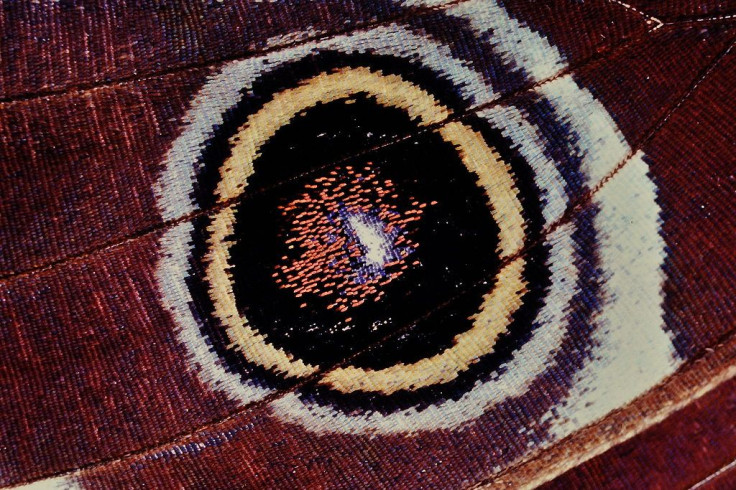Some Butterflies Can Change Their 'Eyespot' Size, But Do It Differently
KEY POINTS
- Butterflies use their 'eyespots' to avoid predatory attacks
- In certain seasons, some butterflies make their eyespots smaller
- B. anynana butterflies change their markings via a hormone called 20E
- Researchers found that only B. anynana took advantage of 20E hormones
- Other species likely use other mechanisms to change their eyespot size
In many butterfly species, the eye-like markings called “eyespots” help deflect predatory attacks. Because of the markings, the predators tend to attack the outer edges of a butterfly’s wings instead of its body.
However, during dry seasons, eyespots can be more detrimental to butterflies in that it tends to make the butterflies more noticeable to predators. As such, a butterfly’s best means to avoid being eaten by a predator during such seasons is to not draw any attention to itself at all and, they can do this by reducing the size of their eyespot. This way, the butterfly can simply hide among dry leaves.
The mechanisms behind this capability among butterflies have only been studied in one species: the African satyrid butterfly or Bicyclus anynana. In these butterflies, the capability to make their eyespots smaller lies in hormone 20E. When the temperature that signals the dry season hits, the quantity of hormone 20E is lessened during the late larval stage; thereby, resulting in smaller eyespots.
The researchers of a new study wanted to see which other butterfly species can change their eyespot sizes in response to temperature and if they do so by the same mechanism as B. anynana.
For the study, the researchers reared 13 different species of satyrid butterflies at different temperatures and they found that all of them had lower 20E hormone levels in response to lower temperatures. However, most of the butterflies did not change their eyespot sizes, even among the butterflies that are known to have the capability.
As it happens, four of the species involved in the study also have 20E hormone receptors at the center of their eyespots just like B. anynana, but changing their 20E hormone levels still did not change the size of their eyespots. This suggests that, even if the temperature does affect the 20E hormone in these butterfly species, it is not the means by which they reduce their eyespot size and, B. anynana might be the only one that took advantage of this mechanism to manipulate its eyespot.
According to the researchers, this shows that B. anynana evolved this capability over millions of years, whereas other butterflies might have used other means and environmental cues to effect eyespot changes.
“If other forms of adaptation are as difficult to evolve as the one identified in B. anynana, then our findings support a previous warning that many species may be vulnerable to extinction in the face of unpredictable and fluctuating temperatures caused by climate change,” senior author Antónia Monteiro said.
The study is published in eLife.

© Copyright IBTimes 2024. All rights reserved.












